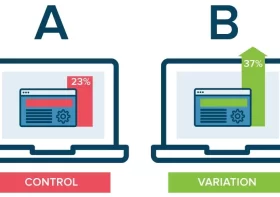Surveys and Feedback Analysis

Welcome to the digital era, where technology is constantly reshaping our lives and businesses. In this fast-paced world, understanding your customers’ needs, preferences, and opinions has never been more crucial. For tech companies, surveys and feedback analysis are powerful tools that can unlock valuable insights to drive business growth and innovation. In this article, we will explore why surveys and feedback analysis are integral to success in the tech industry and how to harness their potential to gain a competitive edge.
The Importance of Surveys and Feedback Analysis
1. Identifying customer pain points: The constant evolution of technology introduces both challenges and opportunities for businesses. Surveys allow you to collect feedback directly from your customers, helping you identify pain points and areas of improvement. This insights-driven approach enables you to develop solutions that address real customer needs, increasing customer satisfaction and loyalty.
2. Tracking customer satisfaction: In a highly competitive tech landscape, customer satisfaction is key to success. Surveys provide a quantitative measure of how satisfied your customers are with your products or services. By regularly analyzing and interpreting survey results, you can gauge customer sentiment and make informed decisions to continuously enhance your offering.
3. Gathering product insights: Surveys provide a platform for customers to share their preferences, opinions, and expectations. This information can be immensely valuable in guiding product development and innovation. By listening to your customers through surveys, you can uncover new features, functionalities, or enhancements that align with their needs and desires, giving you a competitive edge.
Best Practices in Conducting Surveys
1. Clearly define your objectives: Before launching a survey, establish clear goals and objectives to guide your research. Are you seeking to understand customer satisfaction, evaluate a new product, or gather demographic data? By defining your objectives, you can tailor your survey questions and analysis accordingly, ensuring actionable insights.
2. Craft effective survey questions: The questions you ask in your survey must be concise, unbiased, and relevant. Use a mix of open-ended and closed-ended questions to gather both qualitative and quantitative data. Avoid leading questions and ensure that the response options cover a comprehensive range of possibilities.
3. Focus on survey design and user experience: A well-designed survey is crucial to obtain accurate and reliable data. Consider the aesthetics, flow, and ease of completion when creating your survey. Testing the survey with a small group of users beforehand can help identify any usability issues or confusing elements.
4. Encourage participation and offer incentives: In the highly competitive tech industry, customers are often bombarded with survey requests. To increase response rates, offer incentives such as discounts, rewards, or exclusive access. Additionally, make the survey experience engaging and interactive to maintain participants’ interest throughout.
Extracting Actionable Insights through Feedback Analysis
1. Utilize sentiment analysis: Feedback analysis goes beyond simply collecting responses; it involves interpreting, categorizing, and analyzing the data to identify trends and patterns. Sentiment analysis can help you gauge the emotional tone behind the feedback, allowing you to prioritize issues or opportunities that resonate with your customers the most.
2. Identify recurring themes: By analyzing feedback at scale, you can identify recurring themes or topics that arise frequently. These themes often serve as indications of broader issues or trends. Categorize and tag feedback accordingly to explore these themes in greater depth and prioritize actions for improvement.
3. Integrate feedback into decision-making processes: The true value of surveys and feedback analysis lies in the actions they inspire. Make feedback analysis an integral part of your decision-making processes. Share insights across teams, collaborate on action plans, and monitor the impact of implemented changes. This iterative approach drives continuous improvement and keeps you attuned to your customers’ evolving needs.
Conclusion
In an industry characterized by rapid innovation and disruption, surveys and feedback analysis are essential tools for tech companies looking to stay ahead of the curve. By gathering, analyzing, and leveraging customer insights, you can enhance customer satisfaction, drive innovation, and fuel business growth. Remember, the true power lies in not only collecting feedback but also in taking action based on the knowledge gained. Embrace surveys and feedback analysis as invaluable assets in shaping the future of your tech business.

